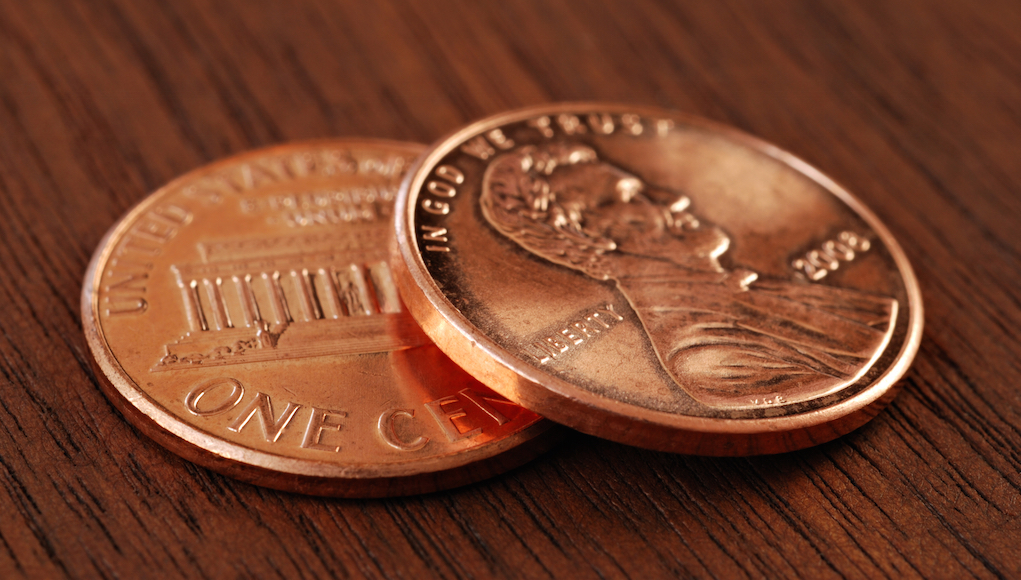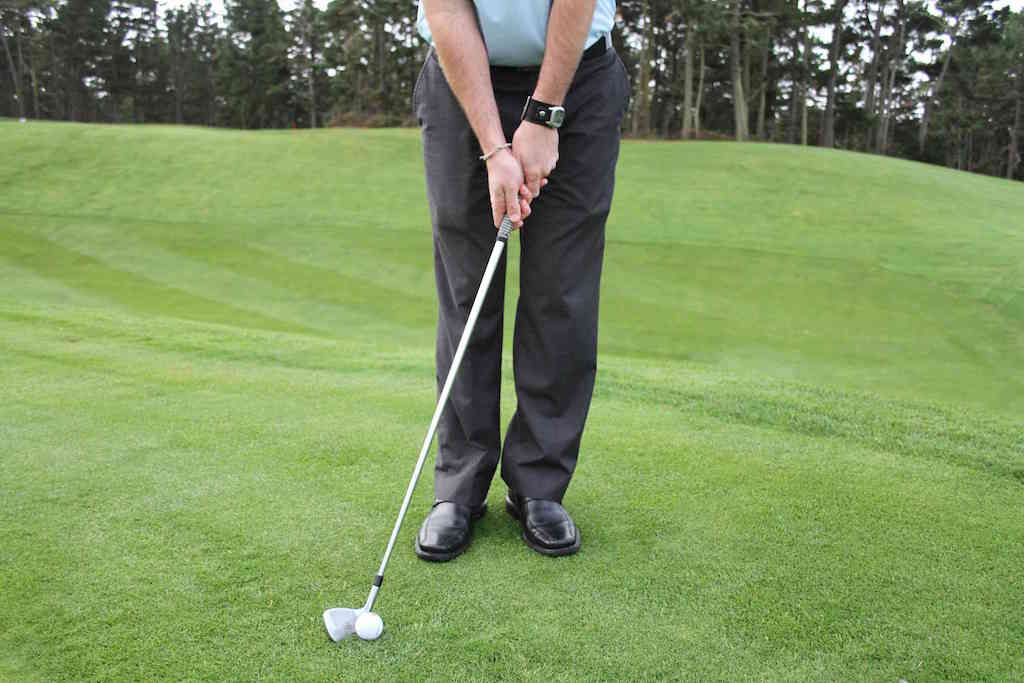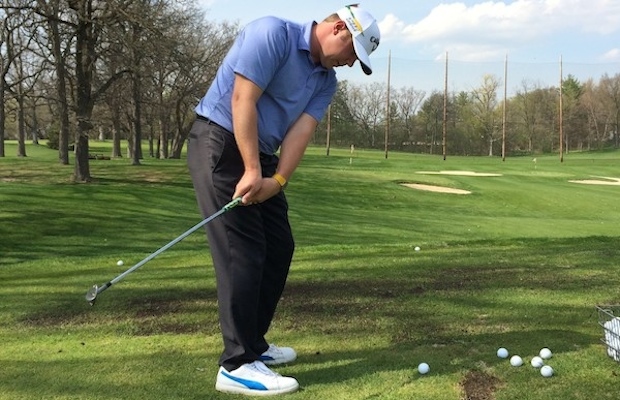Instruction
Fixes for the “chili dip” and “chipping yips”

Other than perhaps the shank, the most frustrating shot in golf is the chili dip; a chip shot that is supposed to go several yards but only moves 5 feet.
The frustration comes from that fact that golfers can often hit two great shots that cover some 400 yards. Get to within 10 yards of the green, and bam… you can only move the ball halfway to the green!
I call it the 2-4-6: Golfers turn two shots into four around the green and end up making a six! Here’s a couple quick tips to avoid this dreaded error:
Check your lie: You have to be able to see the grain in the grass a bit, especially on the bermuda grass found in the southern part of the United States. If it is against you, be careful. It is very easy to stub the club behind the golf ball into the grain. Here’s a quick tip for dealing with grain: If you’re chipping on an uphill slope, you are most definitely into the grain, so be careful. Start to look more closely at the grass that surrounds your ball around the green, and you will begin to see growth patterns.
Choose your club carefully: The lob wedge is the bane of the average golfer, and a dangerous tool in the wrong hands. Forget the flop shots you see pro golfers hit with their 60-degree wedges on television and play your own game. Like it or not, golf played along the ground is MUCH easier, so get used to playing bump-and-run shots. If I could give one tip and one tip only, it would be to play more shots along the ground when you’re around the green. Take your 8 or 9 iron the practice area and learn how to use those clubs to chip.
Set up: The set up for the chip shot is different than all other shots. The stance is quite narrow, the ball is back in the stance and the majority of your weight should be on your lead side. The set up that I see most golfers using is wrong, and here’s why: When you move the ball back in your stance and de-loft the golf club (move hands forward), you are exposing the leading edge of the club. This is very dangerous in chipping.
I see so many students who stub their club in the ground on chips simply because the leading edge is so exposed. Remember, if you de-loft the golf club, you must open the face a little. When you open the face, you are giving the bounce a chance to help you. And if you open the face, you need more club! So bump and run with a slightly open face, your hands ahead and keep your weight a little left.
The stroke: Simply put, “wristy” strokes are dangerous. Golfers can break their wrists a little going, back but NEVER coming through. Try this: Cup your right wrist back a little and practice chipping right handed (pictured above). Keep the wrist bent back all the way through the shot. Check your follow through and make sure that your wrist is still bent back when you finish.
Now, flatten your left wrist (even weaken your grip if it helps flatten your wrist) and practice chipping with your left hand only. See that your wrist stays flat all the way to the follow through of the shot. If you can’t get the feel for those drills, practice chipping cross handed (pictured below). It may help you to be less “wristy.”
One more thing: For those of you suffering from the chipping yips, try the putt-chip method. Stand close to the ball with the club straight up, like a putter. You’ll have the heel of the club off the ground and the toe down. Take your putting grip and make a putting stroke. You will be chipping off the toe of the club, so the ball will go a short distance. But it is almost yip proof!
As always, feel free to send a swing video to my Facebook page and I will do my best to give you my feedback.
- LIKE29
- LEGIT4
- WOW5
- LOL2
- IDHT3
- FLOP1
- OB2
- SHANK6
Instruction
Clement: Laid-off or perfect fade? Across-the-line or perfect draw?

Some call the image on the left laid off, but if you are hitting a fade, this could be a perfect backswing for it! Same for across the line for a draw! Stop racking your brain with perceived mistakes and simply match backswing to shot shape!
- LIKE0
- LEGIT0
- WOW0
- LOL0
- IDHT0
- FLOP0
- OB0
- SHANK1
Instruction
The Wedge Guy: The easiest-to-learn golf basic

My golf learning began with this simple fact – if you don’t have a fundamentally sound hold on the golf club, it is practically impossible for your body to execute a fundamentally sound golf swing. I’m still a big believer that the golf swing is much easier to execute if you begin with the proper hold on the club.
As you might imagine, I come into contact with hundreds of golfers of all skill levels. And it is very rare to see a good player with a bad hold on the golf club. There are some exceptions, for sure, but they are very few and very far between, and they typically have beat so many balls with their poor grip that they’ve found a way to work around it.
The reality of biophysics is that the body moves only in certain ways – and the particulars of the way you hold the golf club can totally prevent a sound swing motion that allows the club to release properly through the impact zone. The wonderful thing is that anyone can learn how to put a fundamentally sound hold on the golf club, and you can practice it anywhere your hands are not otherwise engaged, like watching TV or just sitting and relaxing.
Whether you prefer an overlap, interlock or full-finger (not baseball!) grip on the club, the same fundamentals apply. Here are the major grip faults I see most often, in the order of the frequency:
Mis-aligned hands
By this I mean that the palms of the two hands are not parallel to each other. Too many golfers have a weak left hand and strong right, or vice versa. The easiest way to learn how to hold the club with your palms aligned properly is to grip a plain wooden ruler or yardstick. It forces the hands to align properly and shows you how that feels. If you grip and re-grip a yardstick several times, then grip a club, you’ll see that the learning curve is almost immediate.
The position of the grip in the upper/left hand
I also observe many golfers who have the butt of the grip too far into the heel pad of the upper hand (the left hand for right-handed players). It’s amazing how much easier it is to release the club through the ball if even 1/4-1/2″ of the butt is beyond the left heel pad. Try this yourself to see what I mean. Swing the club freely with just your left hand and notice the difference in its release from when you hold it at the end of the grip, versus gripping down even a half inch.
To help you really understand how this works, go to the range and hit shots with your five-iron gripped down a full inch to make the club the same length as your seven-iron. You will probably see an amazing shot shape difference, and likely not see as much distance loss as you would expect.
Too much lower (right) hand on the club
It seems like almost all golfers of 8-10 handicap or higher have the club too far into the palm of the lower hand, because that feels “good” if you are trying to control the path of the clubhead to the ball. But the golf swing is not an effort to hit at the ball – it is a swing of the club. The proper hold on the club has the grip underneath the pad at the base of the fingers. This will likely feel “weak” to you — like you cannot control the club like that. EXACTLY. You should not be trying to control the club with your lower/master hand.
Gripping too tightly
Nearly all golfers hold the club too tightly, which tenses up the forearms and prevents a proper release of the club through impact. In order for the club to move back and through properly, you must feel that the club is controlled by the last three fingers of the upper hand, and the middle two fingers of the lower hand. If you engage your thumbs and forefingers in “holding” the club, the result will almost always be a grip that is too tight. Try this for yourself. Hold the club in your upper hand only, and squeeze firmly with just the last three fingers, with the forefinger and thumb off the club entirely. You have good control, but your forearms are not tense. Then begin to squeeze down with your thumb and forefinger and observe the tensing of the entire forearm. This is the way we are made, so the key to preventing tenseness in the arms is to hold the club very lightly with the “pinchers” — the thumbs and forefingers.
So, those are what I believe are the four fundamentals of a good grip. Anyone can learn them in their home or office very quickly. There is no easier way to improve your ball striking consistency and add distance than giving more attention to the way you hold the golf club.
More from the Wedge Guy
- The Wedge Guy: Golf mastery begins with your wedge game
- The Wedge Guy: Why golf is 20 times harder than brain surgery
- The Wedge Guy: Musings on the golf ball rollback
- LIKE87
- LEGIT13
- WOW6
- LOL1
- IDHT0
- FLOP4
- OB1
- SHANK8
Instruction
Clement: Stop ripping off your swing with this drill!

Not the dreaded headcover under the armpit drill! As if your body is defective and can’t function by itself! Have you seen how incredible the human machine is with all the incredible feats of agility all kinds of athletes are accomplishing? You think your body is so defective (the good Lord is laughing his head off at you) that it needs a headcover tucked under the armpit so you can swing like T-Rex?
- LIKE0
- LEGIT2
- WOW2
- LOL0
- IDHT0
- FLOP0
- OB0
- SHANK2
-

 19th Hole2 weeks ago
19th Hole2 weeks agoDave Portnoy places monstrous outright bet for the 2024 Masters
-

 19th Hole5 days ago
19th Hole5 days agoJustin Thomas on the equipment choice of Scottie Scheffler that he thinks is ‘weird’
-

 19th Hole3 weeks ago
19th Hole3 weeks agoTiger Woods arrives at 2024 Masters equipped with a putter that may surprise you
-

 19th Hole4 days ago
19th Hole4 days ago‘Absolutely crazy’ – Major champ lays into Patrick Cantlay over his decision on final hole of RBC Heritage
-

 19th Hole2 weeks ago
19th Hole2 weeks agoTwo star names reportedly blanked Jon Rahm all week at the Masters
-

 19th Hole2 weeks ago
19th Hole2 weeks agoReport: LIV Golf identifies latest star name they hope to sign to breakaway tour
-

 19th Hole2 weeks ago
19th Hole2 weeks agoNeal Shipley presser ends in awkward fashion after reporter claims Tiger handed him note on 8th fairway
-

 19th Hole1 week ago
19th Hole1 week agoBrandel Chamblee has ‘no doubt’ who started the McIlroy/LIV rumor and why
























Marcus
Nov 5, 2013 at 5:29 pm
Thanks, great article. When I practice, I can hit any(most) shot’s really well. Especially the basic ones, but get me on the course and I freeze up. I carry a 4 handicap, but i blow 2-4 strokes a round just with short game.
Advice?
Heyzues Escobar
Oct 30, 2013 at 5:19 pm
Excellent article.
Don
Oct 30, 2013 at 4:43 pm
I can’t get my distances right. My chips go past the hole and when I try to chip shorter distances I decelerate and end up chili dipping. I can’t seem to shorten my stroke and accelerate through the shot. This happens regardless of the club that I choose. Any advice?
Dennis Clark
Oct 30, 2013 at 7:23 pm
Well the truth is that decelerating in and of itself does not cause chili dips. An early release does. Choke up on your 60 and open the face. You should be able to hit it harder that way
Don
Oct 31, 2013 at 10:17 am
Thanks … I’ll give it a try.
Andy
Oct 30, 2013 at 10:35 am
Spot on as usual. Chipping yips have been detrimental to my game for a couple of years and have been keeping me from lowering my HCP. This year I´ve put a lot of hours into practicing chipping and finding a sound technique. I´ve practiced a lot with right and left hand only, chipping with eyes closed (try it – I chip better with eyes closed most of the time but would never dare doing it on the course for some reason), chipping out of low bunkers trying not to touch the sand, chipping while being on the phone with someone (handsfree) just to get my mind on something else. What I have found in my chipping is that when I get to low i.e. flex knees to much, I tend to chili-dip more. I now try to stand a bit taller thru the stroke with little wrist hinge going back. Now that I got this sorted and trust my chipping more I went from 11,6 to 9,7 in the last three rounds I played 🙂
Keep up the good instructions!
//Andy
Dennis Clark
Oct 30, 2013 at 3:00 pm
thx Andy. Chipping with eyes closed works really well (to give you some idea how mental the game is) UNTIL…they open their eyes. Ive never found it to be a long term cure. Also try chipping while looking at the hole, AND- get a 9 iron, and extend it by sticking an old broken shaft in the grip hole. Push is all the way down. Now place that extension under your left arm pit and chip away
Martin
Oct 30, 2013 at 9:27 am
Great tip! This thing happens to me from time to time, and if I do it one time during a round it often happens again. Especially if it is a little wet and muddy. It is really irritating, because my short game is the only part of my game I really think I am good at. I can hit good flop shots with both my 58 and 64, love the bunker, and love the chip and run and when I practise the chips and pitches I often hole shots (I would say I practise this more than most amateurs, and I hole this shots from time to time on the course too), but sometimes this 5 feet shot come and I get the yips. When I hit a bad shot I often feel wristy, thats true. I will try the chip-putt method more and have that as a go to shot when this happens. But at the same time I am thinking that I have to try and try my way out of the yips, when its coming. I dont know if that is a good strategy…
Dennis Clark
Oct 29, 2013 at 9:26 pm
just out of curiosity, what is your handicap?
Martin
Oct 30, 2013 at 7:37 pm
I am a 5 handicaper now (was close to scratch in my 20s, 44 now), and since I have been struggling with my long game for two seasons I put a lot of pressure on the short game. It must work from 100 yards and in if I am going to score well.
Dennis Clark
Nov 6, 2013 at 2:59 pm
I don’t know anyone who hits MORE greens as they get older….we all need to stay sharp around the green as we age, I agree.
Golfer X
Oct 29, 2013 at 7:50 pm
Good advice, still love my L wedge though…
Dennis Clark
Oct 29, 2013 at 9:27 pm
just out of curiosity what is your handicap?